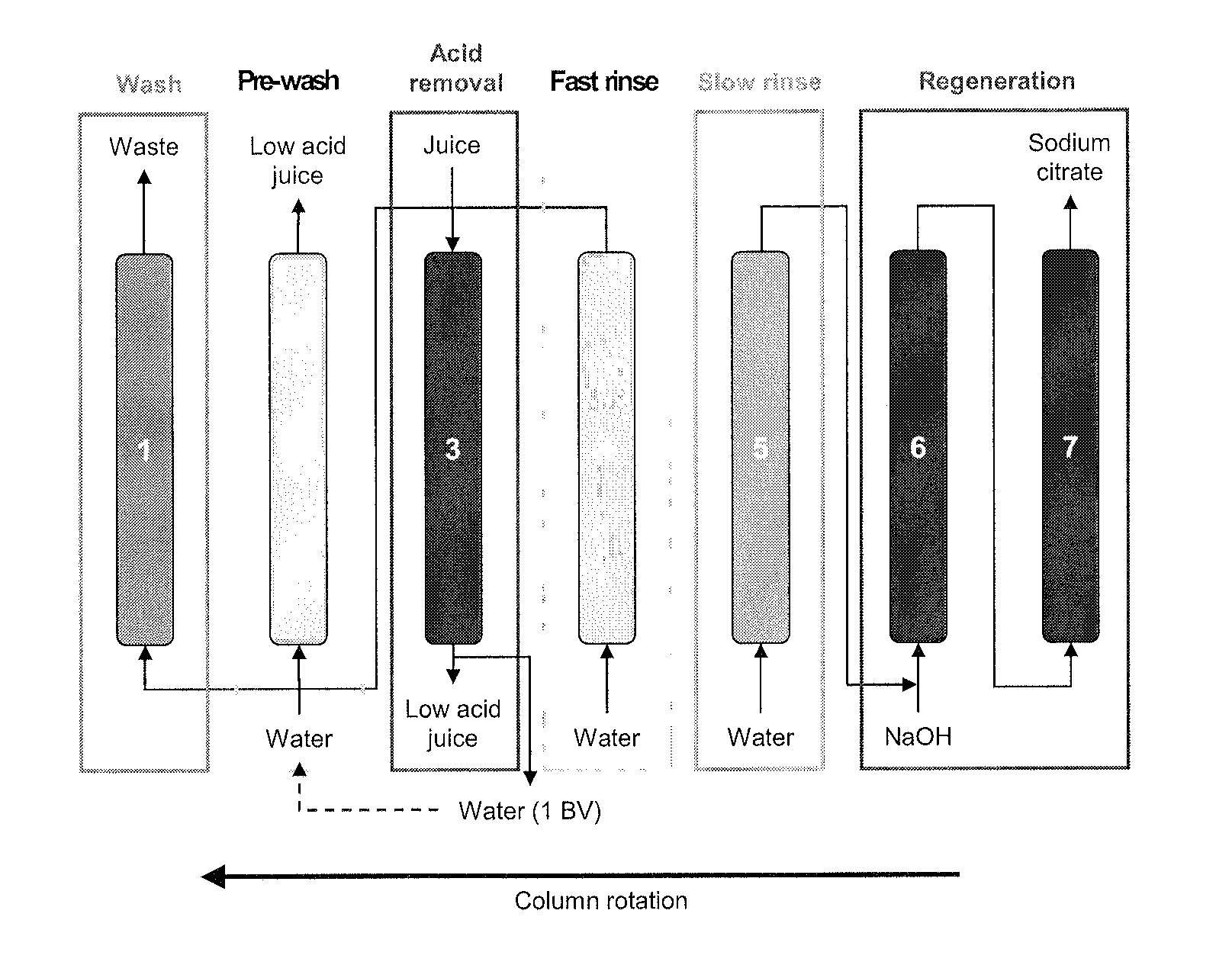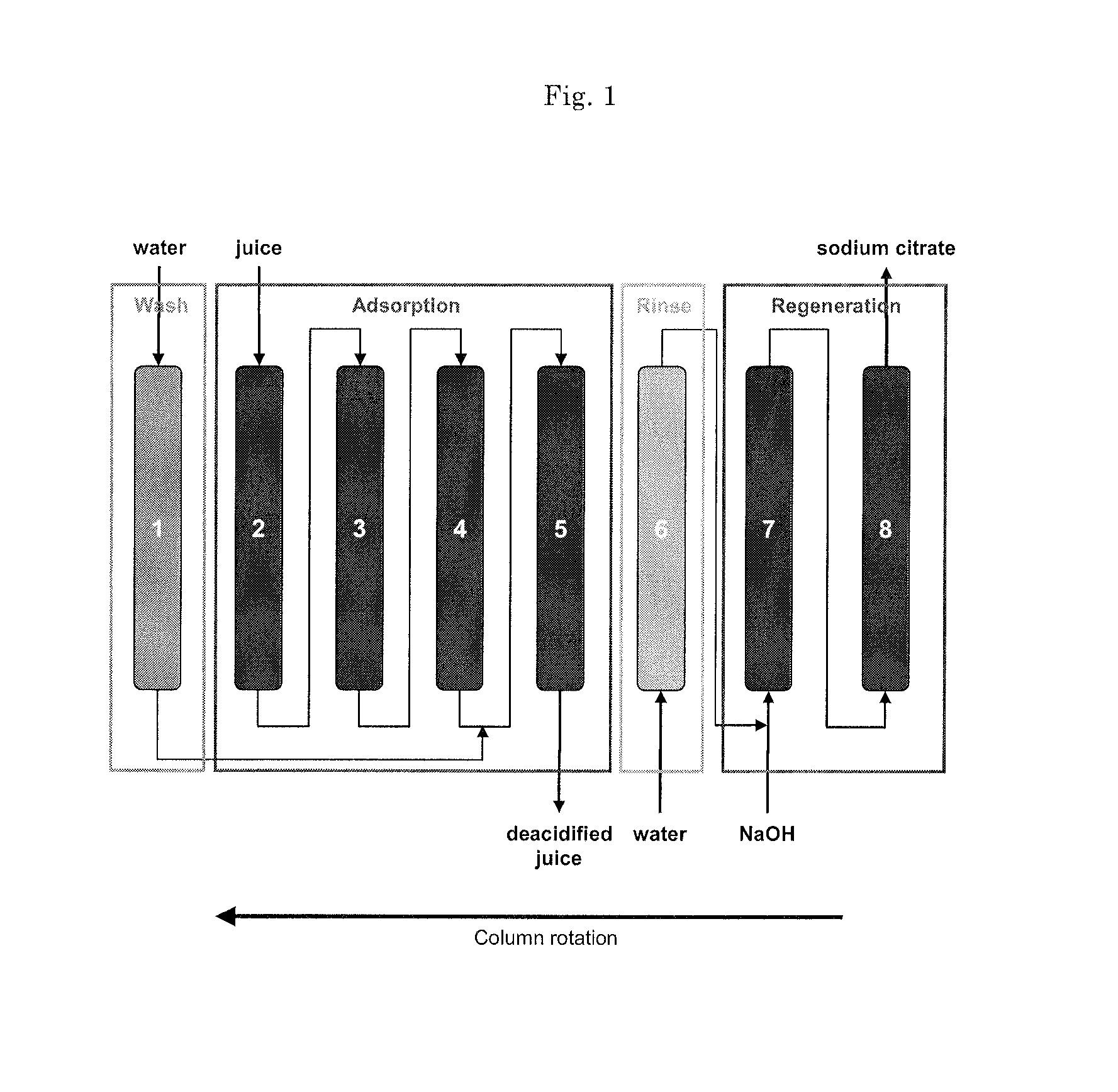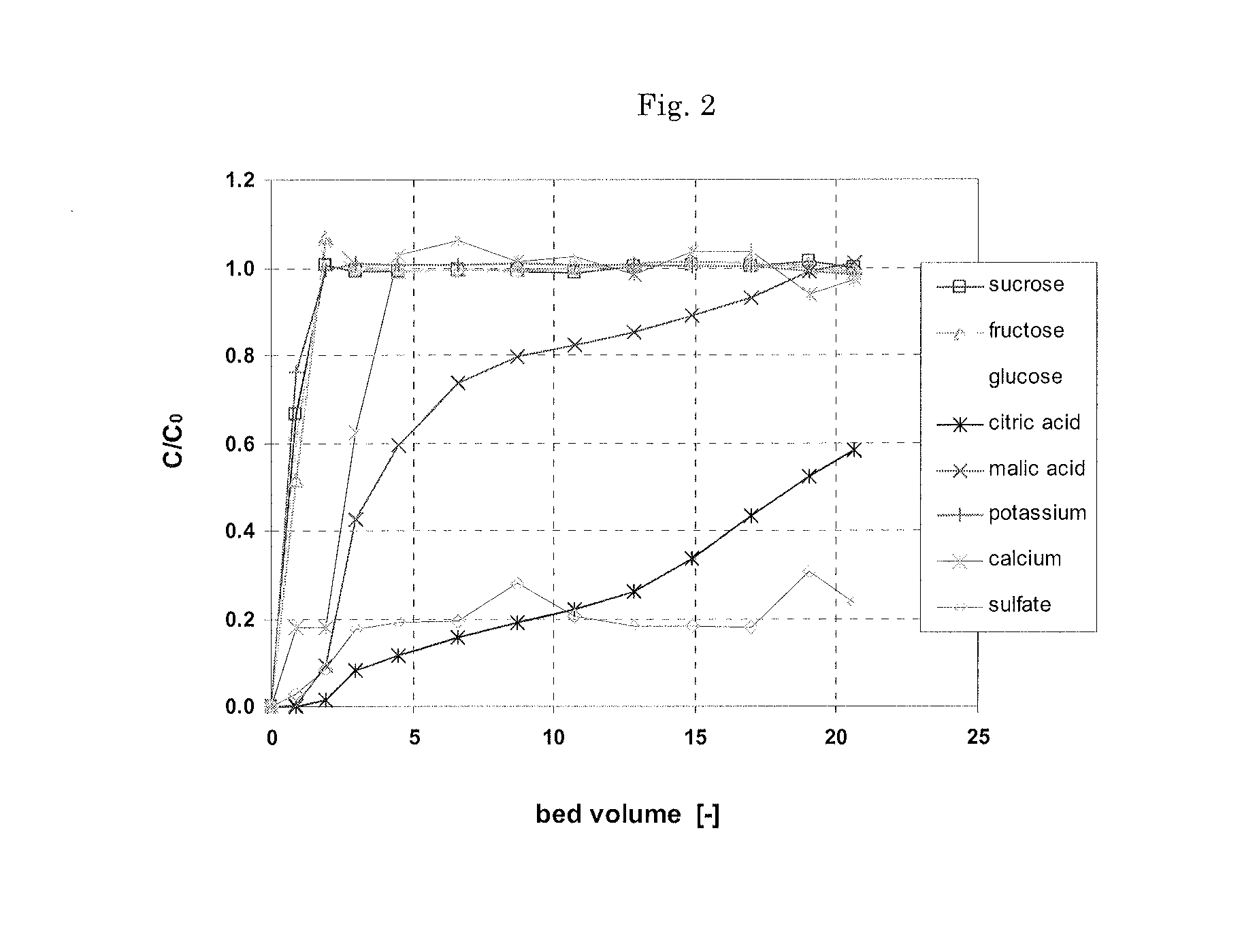Methods and compositions for deacidifying fruit juice
a technology of compositions and fruit juices, applied in the direction of ion exchangers, separation processes, food shaping, etc., can solve the problems of consumers experiencing dental erosion, gastric distress and/or digestive difficulties, and material with a brix (sugar)/acid ratio that is too low
- Summary
- Abstract
- Description
- Claims
- Application Information
AI Technical Summary
Benefits of technology
Problems solved by technology
Method used
Image
Examples
example
[0048]Frozen concentrated orange juice was diluted with water to 11.6° Brix. This orange juice was pretreated by centrifugation and filtrated over a membrane filter (0.45 μm) for removing suspended solids in order to prevent clogging of the resin during deacidification.
[0049]A column packed with 54 mL weak base anion exchange resin Dowex Monosphere 77 was used for removal of citric acid from orange juice. The resin bed was loaded with 21 bed volumes of pretreated orange juice at a flow rate of 3.5 mL / min. The normalized concentration of sugars, acids, salts and pH in the deacidified juice was determined and the results are illustrated in FIG. 2. Sugars and cations showed a sharp breakthrough since these compounds do not bind to the resin. Binding of citric acid and to a lesser extent malic acid resulted in a lowered concentration of these compounds in the treated juice. In the first 10 bed volumes the pH was above 7.4 due to the high removal of citric acid (80%). With a progressive ...
PUM
| Property | Measurement | Unit |
|---|---|---|
| flow rate | aaaaa | aaaaa |
| adsorption capacity | aaaaa | aaaaa |
| flow rate | aaaaa | aaaaa |
Abstract
Description
Claims
Application Information
 Login to View More
Login to View More - R&D
- Intellectual Property
- Life Sciences
- Materials
- Tech Scout
- Unparalleled Data Quality
- Higher Quality Content
- 60% Fewer Hallucinations
Browse by: Latest US Patents, China's latest patents, Technical Efficacy Thesaurus, Application Domain, Technology Topic, Popular Technical Reports.
© 2025 PatSnap. All rights reserved.Legal|Privacy policy|Modern Slavery Act Transparency Statement|Sitemap|About US| Contact US: help@patsnap.com



